The Philippines’ northern paradise, Batanes, is a place that I proudly call ‘home’. Ask any tourist who has been to our group of islands and they will surely speak volumes of its utter beauty and serenity — however, that doesn’t stop there because Batanes food or Ivatan cuisine is something to rave about too.
Best Tours in Batanes?
Come and check out this list of the top things to do in Batanes which features the best activities and tours to do in the island and more!
We are surrounded by clear seas and lush greenery, after all, so you will definitely find a varied selection of seafood and vegetable dishes. They may all be cooked in a way that is simple, but I guarantee you, they are all flavorsome!
The best part of it all…? You’ll be assured that every plate will be fresh and organic!
So in order to make the most of your Batanes itinerary, let me give you an idea of the top Ivatan food or dishes to try, as well as where to best try them.
» READ: Batanes Itinerary for 5 Days
Top Batanes Food
TRIVIA: When in the islands, you will notice that most of the Batanes food or dishes are served in a big green leaf (as shown on the cover photo of this post). This becomes even more evident if you come to visit during a fiesta event.
.
Those leaves are called vunung or breadfruit leaves (or kabaya in Filipino). Traditionally, meals are served in this leaf for easy wrapping — not to mention that it’s environmentally-friendly too! As for utensils, we customarily use our hands. It may seem difficult at first, but as a local, this is like the best and most homey way to eat Batanes food. In fact, science even shows that eating food with your hands is healthy! Google that to know what I mean –wink–
1. Uved
Called ‘tabtab‘ in Sabtang (one of the 3 inhabited islands in Batanes), uved or uvud is one of those Ivatan comfort food that I always miss!
It’s basically made of finely-grated corn (which is found at the base of a trunk of a banana plant) that’s mixed with ground meat (beef or pork), and minced fish. Afterward, it is seasoned with onion, garlic, salt, and pepper. This will be rolled into balls or served as-is and can either be with or without its broth.
– – –
2. Dibang
A common fish that you will find in the islands is dibang or flying fish — yes, it does ‘fly’ or leap out of the water, a defense mechanism to evade predators. To date, it has different variations (other than simply frying it as is), such as:
- Lataven – are you familiar with kinilaw-style of preparing fish meat in the Philippines or simply, ‘ceviche’? If yes, then lataven is very similar to this. Dibang (or any kind of fish) is drenched in vinegar and calamansi juice, as well as mixed with minced ginger, onions, and salt.
- Maytahes (one-day-old) – after the fish is cleaned and opened up, it will be marinated in salt, vinegar, and garlic and then laid out under the sun for a day to dry.
– – –
3. Vunes
This is a dish that my father used to prepare a lot for our family and it’s one of my favorites! This is made of preserved gabi (taro) stalks which could technically last for years.
As a typical Batanes food, the gabi stalks are first soaked in water. Afterward, it will be cut and minced and then cooked together with pork and patola (or sponge gourd).
You could surely think of it as another version of laing, a Bicol specialty in the Philippines.
– – –
4. Payi
Payi or lobsters are abundant in Batanes, so a humongous one can be easily bought for as cheap as Php 150 (or $3)! Indeed you could imagine my surprise when my family and I moved out of Batanes and I found out that my favorite payi is ridiculously expensive in the city.
Another crustacean that you’ve probably heard about would be tatus or coconut crabs which are well known for their sweet meat and creamy aligue (or crab fat) — after all, they feed on fleshy fruits, nuts, seeds, and coconuts (which is not a big part of their diet, contrary to popular belief).
Anyhow, these coconut crabs are impressive because they can climb a coconut tree, take one, and cut its husk with just their claws; although… it can actually take several days for the coconut to be opened!
Now here’s the thing: tatus is declared as an endangered species.
If you search Google, there’s actually no official statement that they are endangered; but in Batanes, it has been declared as such because it’s noticeable how it has become considerably difficult to find or hunt for them.
I do remember that when I was small, my father can catch coconut crabs easily if he just goes to the forest and fields; but it seems that nowadays, such is not the case anymore.
Starting this year, consuming them is NO longer allowed. In the rare case that you happen to stumble into a restaurant that offers you one, please refrain from eating it to help alleviate this problem. I mean I know that I’m kind of a tease for even discussing tatus when it’s actually a banned dish, but I feel the need to mention this so as to help educate you guys about the situation revolving around this ‘endangered’ species in Batanes. Thanks for cooperating with us Ivatans!
– – –
5. Root Crops
The Batanes Islands are abundant with root crops, namely:
- Wakay (sweet potato)
- Dukay (yam)
- Uvi (another type of yam)
- Sudi (taro)
They’re steamed, fried, or smoked; but recently, we have started to make different ways of cooking it (I’ve heard that there’s even a wakay donut now).
Personally, I love to eat them fried and then dipped in condensed milk or coconut cream!
– – –
6. Luñis
This is a different version of the popular Filipino dish, adobo, because luñis is rather served dry.
Lasting for quite a while, this traditional dish is made of pork cooked with rock salt until its fat is rendered and it turns golden brown. Back in the old days, it is stored in its own lard in jars for months to ensure continuous supply.
To best eat luñis, I love to pair it with supas whilst dipping it in vinegar and garlic!
– – –
7. Supas
Always a staple during fiestas or festivals, supas or balencyana (as called in Itbayat Island) is rice cooked in turmeric pulp (yellow ginger) that’s often mixed with garlic and pork.
It’s aptly called yellow rice because, well… it is yellow from the turmeric. Some people would often say that the taste is close to ‘java rice‘, and that’s right! Though, I have to say that I like our supas more when it comes to flavor.
– – –
8. Other Local Vegetables
- Tamiduk – also called as pako or Fiddlehead fern, this is arguably the most popular vegetable in Batanes and one of my favorites too! When I was still living in the island, I often helped prepare it for our meals as it was easy to make: simply sauté and season with salt, garlic and onions. If you go to restaurants, they often serve it as a salad with dressing (such as calamansi vinaigrette).
- Utut nu Bulyas – my favorite morning fix, these are scallions or green onions that are sautéed together with scrambled egg and spices.
- Chinavules – these are steamed taro leaves that are mixed with garlic, ginger, and onions.
– – –
9. Other Batanes Food from the Sea
- Arayu – also called mahi-mahi or golden dorado, this fish is indeed of golden color and slightly mixed with hues of blue and green. In Batanes, harvesting this fish is a part of a sacred tradition (kapayvanuvanua) in the small fishing village of Diura. Up to this day, the Ivatans there still practice it as they believe that it will protect them from the sea as well as give them a bountiful catch.
- Kanañis – octopus that is commonly fried, this is often a favorite when it comes to beer drinking sessions!
- Seaweed soup or balls – my family actually rarely eats this but it’s quite a unique treat (and healthy too!)
- Uni – these are sea urchins and they can be eaten raw or cooked.
- Dumay – also called as a ‘common periwinkle’, dumay is a species of small edible sea snail; however, as much as I love them, it’s a bit of a pain to eat (you have to use a pin to scoop it out, but I bet restaurants can serve this to you without its shell).
.
– – –
There is absolutely a LOT of other Batanes food that you should try, but for now, these are the top dishes that I would recommend that you try as a start!
Now, if you’re wondering about a must-try fruit or drink, below are what I would recommend (other than the typical mangoes, coconuts, etc.).
BONUS: Other Batanes Fruit & Drink
Chayi – or Spanish lime is not actually lime but more of a variant of lychee. It can get messy to open it up though since its skin’s juice can be quite sticky, but the creamy pulp inside is so heavenly to eat!
Palek – our native wine that’s made from sugarcane and these are sold wildly across the islands! (As pictured here).
.
• • •
Batanes Food: Where to Eat
If you ask me, the best place to eat Batanes food is in a local’s home; so, if you’re ever invited for a meal into an Ivatan’s home, you should definitely take up their offer!
Otherwise, local festivals or fiestas grant you the freedom to step into any stranger’s house and eat their “handa” or food that has been prepared for guests. It may sound strange to just come up unannounced to someone else’s home, eat their food, and then leave; but, it’s quite the norm!
Just say: “Kapian kamu pa nu dios!”, introduce yourselves, and celebrate the occasion with the locals!
If these don’t apply to you, you can always go to a local restaurant. Actually, when I was still living in Batanes, I don’t think we ever had restaurants — except for SDC (which was more of a canteen than a restaurant if you ask me).
But with the recent tourism boom, a lot of restaurants have popped up and those that I recommend would be the following:
1: Octagon Restaurant
An octagon-shaped restaurant, this has an excellent outdoor deck area with awesome views over the West Philippine sea, Naidi Hills, and Basco port that’s located on the National Road near the Basco welcome sign. In here you can find both local Batanes food and Filipino food (must-try is their ‘uved’ which I really love!)
Sitio Disong Brgy. Kaychanarianan
Along National Road
Contact Numbers: 09396451744 / 09369548482
Email: [email protected]
– – –
2. Cafe du Tukon
The sole restaurant of the luxury hotel Fundacion Pacita, this place does not only have a picturesque view over the sea, the hills, and Mt. Iraya but it also offers delicious Ivatan and western dishes for your fancy. I recommend trying the luñis, lataven, and picadillo a baka.
Brgy. Chanarian, Tukon
Contact Numbers: 09399016353 / 09178559364
Email: [email protected]
– – –
3. Marconine’s
When you’re out to check Rakuh a Payaman (Marlboro Country) or Vayang Rolling Hills in Batan, you will find the humble canteen of Marconine’s. However, don’t let its size fool you because it offers you grand views and sumptuous meals at a very affordable price!
Uyugan, Batanes, Philippines
No contact number or email available, but it’s the only restaurant you’ll find at the spot.
– – –
4. Pension Ivatan
Yet another accommodation place, its restaurant is also a favorite for filling up one’s appetite with great and authentic Ivatan dishes!
Brgy. Kayvaluganan
Contact numbers: 09088659675 / 09175859288
Email: [email protected]
.
.
• • •
Overall
Writing this post just made me crave for Batanes food even more…
Nonetheless, I hope this helps you as you map and plan out your upcoming things to do in Batanes! It is also my hope that you will come to love not only the cuisine but also the Ivatan people, nature, and culture.
Let me know how it goes for you!
NOTE: I’d like to give my heartfelt thanks to Mr. Opal E. Bala for providing me with the above food photos. If you need a professional photographer in Batanes, he’s the guy you should go for! Contact him via his email: [email protected] or check out his Facebook page.


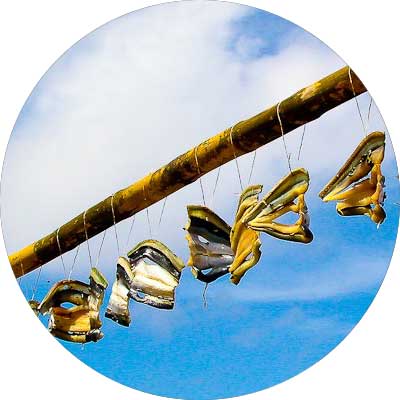
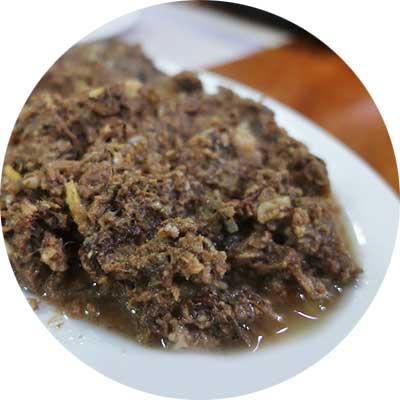

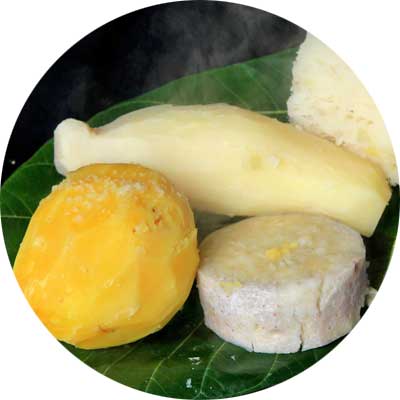
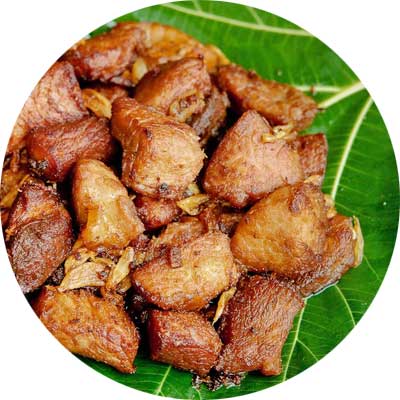
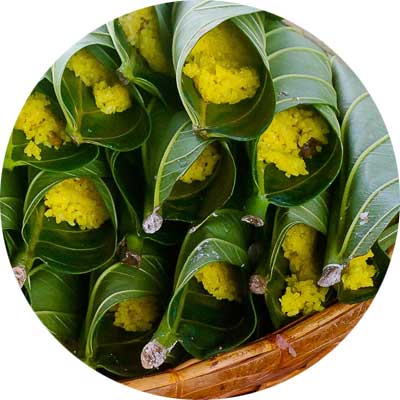
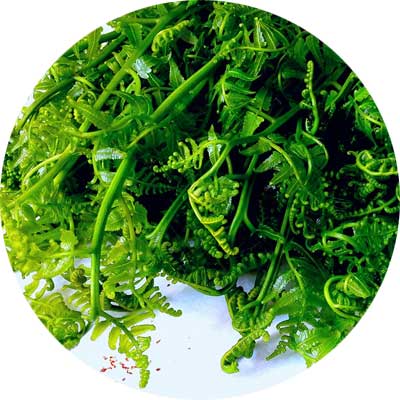
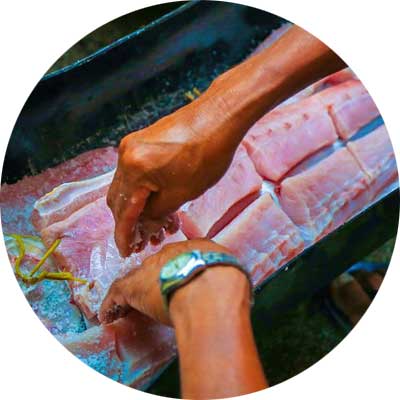
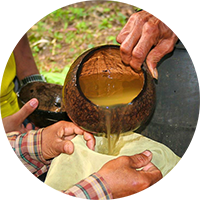
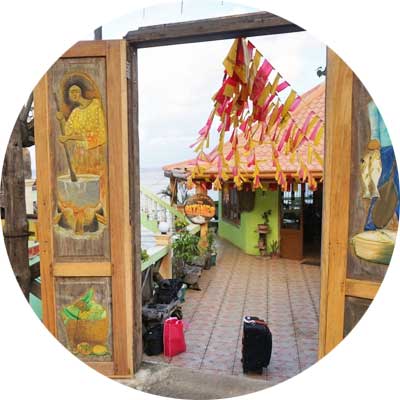

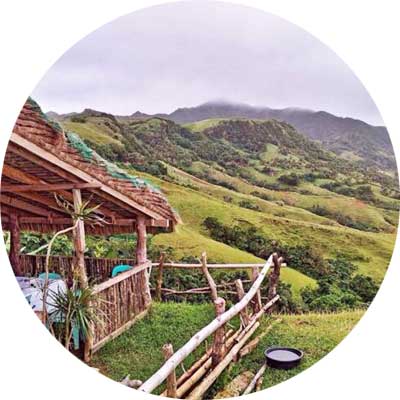
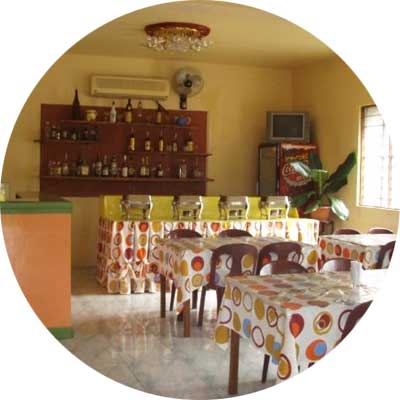
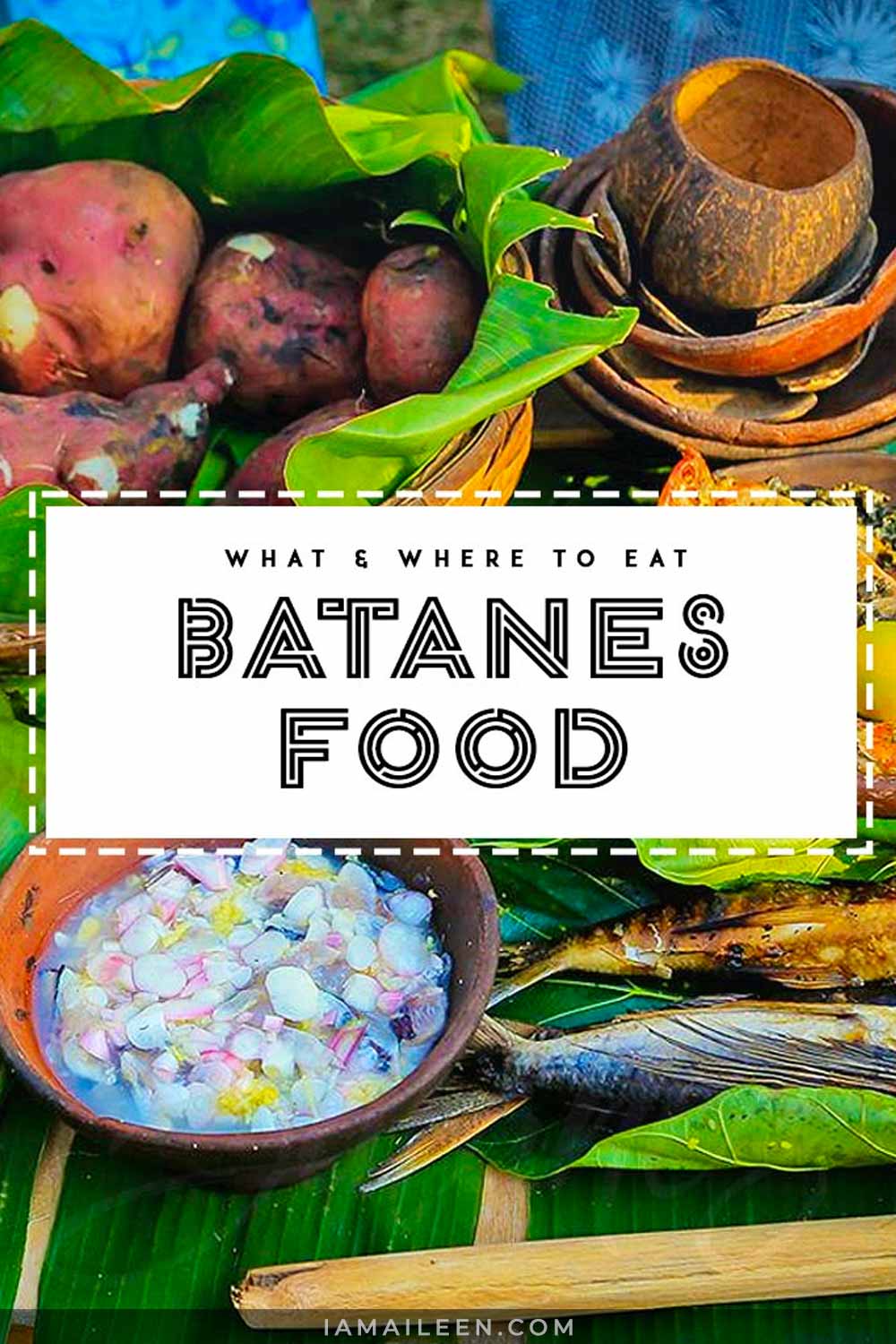


Your writing on Batanes is fantastic, dios mamajes!
Also a note, Payi is also becoming extinct in the gathering spots near Itbayat (most of it comes from there). I’d recommend not eating either. Batanes is a very delicate eco-system.
Me and my brother are going to Batanes in December, I now got a lot of ideas what to do there and how to enjoy it to the max. Thank you Aileen.
I’m happy to hear this! Enjoy your trip and let me know how it goes :D
My husband & I will be going to Batanes on Feb. 2020. Thank you so much for your article about Batanes. Definitely it will help us a lot. God bless your kindness to share the beauty of Batanes.
2019 is the best year yet…why? because I’m going to Batanes! The land of my forefathers. It’s going to be my first time. I will be with my mom who last went there in the 60s. Yikes! The governor at that time was her uncle. It was my grandfather who was born and raised in Batanes and after WW2 settled in Manila. Unfortunately, after living in the USA and Manila, he wasn’t able to go back again. It was his dream that his family will someday go back. This is for you grandpa! I’m soooooo excited…Batanes here I come!!!